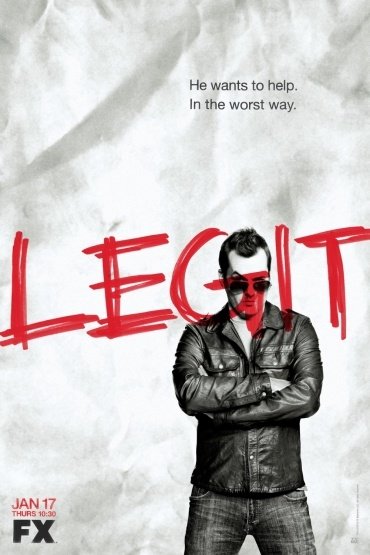The Screenwriter's Toolbox Part V: Using Final Draft's tagging functions
January 20, 2022
Final Draft has some amazingly advanced tools—like Beat Board—Tagging is another one.
Tagging in Final Draft is about having a way to identify and then collate elements. From a production standpoint, for example, let’s say you have a cop character, and you need to be sure that a BADGE/I.D. is present on the set every time that character is in a scene. You could tag the cop character, RAY, and then add a sub-tag called BADGE/I.D. (or perhaps generically COP STUFF) and run a report on that tag. Every time RAY shows up in a scene, his BADGE/I.D. sub-tag also shows up with information on what scene he’s in and what’s needed.
Perhaps this might seem of limited use to writers, but it’s invaluable to production. If your film class is doing a film project, you can tag the script with all sorts of identifiers and keep track of everything efficiently—and that's just the simplest use of tagging.
Let’s drill down a bit into this feature and see the full scope of what can be done.
THE BASICS
Tags are highlighted text that then can be viewed and reported on. Characters, scene headings, concepts, etc. For more detailed info on how to do tagging, watch this great tutorial on the mechanics of doing tags.
Macs and PCs have different menus, so you’ll have to adjust accordingly.
Beyond the basics, how do we use this great feature as both a writing tool and a teaching tool? I have some ideas, but I’m sure once you get into it, you’ll come up with many more.
HOW MANY SCENES?
I tell my film students all the time that writing a sequence of scenes that doesn’t feature the main character is going to get them into trouble. In the real world (such as Hollywood is from the Show Business standpoint) no company hires a star of note and then allows them to be missing for more than a page or maybe two.
I’ve seen student scripts with five pages of no main character which means no star. There is no doubt that when creating a story, side characters begin to take over at times, so you have to watch how much time they take up in a scene or overall in a script. They can certainly be more fun than your main character and so you sometimes tend to write them in an increasingly bigger role. But no one is going to want Angelina Jolie, for instance, to be ‘up-staged’ by someone playing a side character no matter how compelling they are. Even movies with buddy-cop teams always have one of those characters featured more than the other.
This has nothing to do with ego; it’s business. Marketing is done using a star’s name and likeness, so they better be largely seen. When a script is sent to an agent or producer, they’re already filling in a star as they read. Move away from the main character for too long a time or for a majority of scenes, and these agents and producers start to get antsy.
Tagging all your characters using the TAGS MENU > TAG ALL CHARACTERS is a simple way to get a report on all your characters as they appear in the script to see visually where your main character is missing or underused. This is great both when your students are writing a script and when they’ve finished to give them a simple diagnostic tool to bring their work into industry preferences.
1. GITTES and MRS. MULWRAY
Chinatown is a unique film and one that has stood the test of time. The Jake Gittes character is in every scene. If Jake doesn’t see it, then neither do we. We never cut away to see the bad guys or other cops, so a report on Jake’s presence wouldn’t accomplish much except to show if he isn’t in a scene which, I guess, would be valuable if that was yours or your student’s goal.
But Chinatown also has a very complex relationship between Jake and Mrs. Mulwray. How many scenes are they in together? A report using tags can tell you.
But even more, there are at least three aspects to their relationship. She has various iterations as a Client, a Plot Device, and a Lover to Jake. I can create a generic character tag and sub-tag her as Client, Device, Lover to see if Jake and Mrs. Mulwray’s storylines are going along well. This allows me to track the function she serves in the script.
How about the plot itself? I can tag a slugline then sub-tag it as Clue. For example, in the sequence at the yacht club, I can tag that Jake gets an important clue as to what’s actually going on in this twisty thriller. I could also subtag ‘red herrings,’ ‘deliberate misdirections,’ 'major clues,’ etc. I could also tag Noah Cross (John Huston) and when he’s doing things to cover up the murder of Hollis Mulwray and when he’s covering up his relationship with his daughter.
2. OTHER GENRES
In a romantic comedy, I can make sure that there are enough scenes between the two characters falling in love to make that plausible to believe.
In a thriller or ghost story, I can sub-tag Scares, Payoffs or Deaths.
When I wrote for SyFy Channel, they required some major action approximately every eight minutes. Now while this may sound like a formula, and it is, their metrics showed what their audiences expected, and they wanted their original material to adhere to that.
Data mining and metrics have become even more pronounced than that with companies like Netflix and Amazon since they track audience reactions almost minute by minute. Part of the process of bringing something to production is delivering on measurables they know work based on data points. Having a tool like this to meet their production requirements is of immense value and teaches students about the real-world aspects of writing for streaming companies. It also helps shape story and character.
FORCING STUDENTS TO THINK ABOUT STORY and THEME
Tagging itself is great for keeping track of things, but what it also does is push students to not enter information willy-nilly. They have to think about what they’re writing because you’re going to ask them, perhaps, to tag scenes (sluglines,) characters, or maybe even props that are important. Anything can be tagged and then sub-tagged, so imagine how much more involved a student is in the story creation process if they have to think through what they’re doing with a scene or character as they’re creating the script.
Story points—important moments that cause a story to turn—can be tagged. Commonly called Plot Points, they are tentpoles of structure which if not done properly, become a failing of many stories. Again, pushing students to identify turning points offers a great teaching opportunity as you either validate their choices or guide them in understanding why something isn’t a tentpole. A tag report instantly shows how something is moving.
Theme is that amorphous thing that everyone understands and almost no one delivers on except accidentally. Identifying a story's theme, then tagging for scenes when that theme is either featured or not, can be a great help to guide students to at least think about the theme and then have a mapped representation of it.
Tags are non-intrusive—they don’t show up unless you’re in the TAGS MENU. Having a way to notate and then see that underlying information is of such value.
WRITING IS REWRITING
Sure, we all aspire to be perfect writers, but if you’ve been doing this for more than a minute you know that’s never going to be true. Teaching your students to be great rewriters is going to serve them better than anything else.
I really hate reading through my script after a draft, but nothing else shows me inadequacies better. Awkward text jumps out at me; weak moments or bad dialogue are evident on a dedicated read. I wish I’d had this tagging function earlier in my career so I could have used it to mark material I needed to work on as I read it preparatory to rewriting.
Tag categories can be created to cover various types of rewriting. You can use it for yourself, teach your students how to do it, or in reviewing their work, return a marked-up script that is tagged for specific issues. If they are bad at delivering on information, you can tag those moments, generate a report, and show them how many times they’ve missed at that. Conversely, tagging good moments or improved moments works too! Give them “gold stars” so to speak.
Perhaps if you’re doing a group project, maybe you’d want various students to work on a rewrite as a team. You could tag specific scenes, like action scenes, to be re-written by the Blue Team or Orange Team. Everyone gets the script but only those scenes you’ve tagged are rewritten by the various teams of students; or tag Josh, Lamar, Neisha, Maria, Shelby, etc. individually instead of as a team to work on various script sections that need a rewrite or polish.
KEEPING TRACK OF CHARACTERS AND THEIR MOVEMENTS
There are so many produced shows that are prime examples of scripts that could have (and maybe did!) benefit from tagging.
Orphan Black featured many clones who each had to have their storylines tracked. Glee was an ensemble cast with many strong characters. Tagging them for a consistent percentage of appearance per episode would be simple. Imagine staffing on Friends or Black-ish and being able to get a report on each individual’s contribution? Dear White People tends to focus on a single character’s story per episode, but you could tag the setups for characters not featured and keep track of those moments for future episodes.
The Queen’s Gambit told Beth Harmon’s story from various eras in her life. Using tags would make keeping track of that easy-peasy.
Dexter? Sure. In the series, his father showed up regularly both as a ghost (“Hamlet” anyone?) and in flashbacks when he was training Dexter to fit into the "normal world." Tagging those occurrences per episode and per season would be a great help to keeping track of dear old dad as he counsels Dexter as a ghost (in Dexter’s mind) or real human (flashback). Showing the tagging and sub-tagging to students writing something similar would be a boon to nascent writers struggling to keep it all straight and help them when they become staff writers on a series.
THE RULES
Travelers is a sci-fi show about a group of people who go back in time to set things right. They work by a set of very specific rules where the adherence or violation of these rules causes most of the show's conflict.
“Travelers” Rules:
- The mission comes first.
- Leave the future in the past.
- Don't take a life; don't save a life, unless otherwise directed. Do not interfere.
- Do not reproduce.
- In the absence of direction, maintain your host's life.
- Do not communicate with other known travelers outside of your team unless sanctioned by the Director.
There are also three protocols used by Administrators in the show.
Using tags to mark scenes as violating or upholding those rules and protocols would be a terrific help to me if I was working on the series.
For example, my tags would perhaps be:
-
- Rule 1 > Violation (red with yellow text).
- Rule 1 > Upheld (green with white text).
- Rule 1 > Potential Conflict (grey with black text)
- Etc.
How about someone writing something using Isaac Asimov’s Three Laws of Robotics?
- A robot must never harm a human, or through inaction allow a human to come to harm.
- A robot must always obey the orders of humans except where to do so would conflict with obeying the first law.
- A robot must protect its own existence, except where to do so would conflict with the first or second laws.
All those laws can be tagged in a similar fashion to Travelers and a report can be generated to keep track of those laws in a story.
IN CONCLUSION
As we grow as writers, we become better able to keep track of our stories because our process solidifies. But even at a higher level, narrative threads still get lost, characters overwhelm, types of scenes are either too many or too few. Think of the confusion students who are beginning writers must feel.
The more you use Final Draft tools (like tagging) yourself in your own writing, the better able to bring that information and technique into the classroom to help your students navigate their writing world.
Click here for more Screenwriter's Toolbox tips and classroom support articles.
Written by: Mark Sevi
Mark Sevi is a professional screenwriter, screenwriting teacher, and podcaster. He is the founder of the Orange County Screenwriters Association.- Topics:
- Industry Interviews & Spotlights




